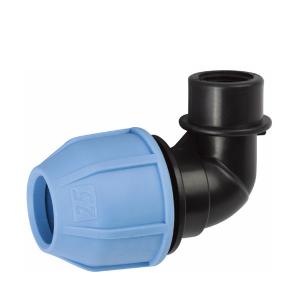Plastic water pipes are a popular choice for many homeowners and plumbers alike due to their durability, flexibility, and ease of installation. In this article, we will explore the world of plastic water pipe fittings and how they contribute to efficient and effective plumbing systems.
The Benefits of Plastic Water Pipe Fittings
Plastic water pipe fittings are known for their numerous advantages. They are lightweight, making them easy to handle and install. This not only saves time but also reduces the risk of injury during the installation process. Additionally, plastic fittings are resistant to corrosion, ensuring a longer lifespan compared to their metal counterparts. They are also less prone to leakage, which can be a significant concern with metal pipes.
Types of Plastic Water Pipe Fittings
There is a wide variety of plastic water pipe fittings available, each serving a specific purpose. Some of the most common types include:
– Elbows: These fittings are used to make 90-degree turns in the pipe. They come in various sizes to accommodate different pipe diameters.
– Tees: T-shape fittings that allow for the branching off of a pipe, creating two outlets from a single pipe.
– Couplings: Used to connect two sections of pipe together, ensuring a seamless flow of water.
– Unions: Similar to couplings, but they can be disassembled for easy maintenance or replacement of the connected pipes.
– Reducers: These fittings are used to reduce the size of a pipe, allowing for connections between pipes of different diameters.
– Caps: Used to seal the end of a pipe, preventing water flow or leakage.
Installation Made Easy
One of the most significant benefits of plastic water pipe fittings is the ease of installation. They can be connected using various methods, including:
– Solvent Cement: A chemical adhesive that creates a strong bond between the pipe and the fitting when applied and allowed to dry.
– Push Fit: A quick and easy method that involves pushing the pipe into the fitting until it clicks into place.
– Compression Fittings: These fittings use a rubber ring that is compressed when the pipe is inserted, creating a watertight seal.
– Flare Connections: A method that involves flaring the end of the pipe and connecting it to the fitting using a special nut.
Maintenance and Troubleshooting
Proper maintenance of plastic water pipe fittings is essential to ensure their longevity and performance. Regular inspection for signs of wear, damage, or leakage is crucial. If issues are detected, they can often be resolved with simple fixes such as tightening connections or replacing damaged fittings.
The Future of Plastic Water Pipe Fittings
As technology advances, so do the materials and methods used in plumbing. Plastic water pipe fittings are continually being improved to offer better performance, durability, and environmental friendliness. Innovations such as self-healing materials and improved bonding techniques are on the horizon, promising even greater reliability and ease of use.
In Conclusion
Plastic water pipe fittings are an integral part of modern plumbing, offering numerous benefits over traditional materials. Their ease of installation, durability, and resistance to corrosion make them a popular choice for both residential and commercial applications. As the plumbing industry continues to evolve, we can expect to see even more advancements in plastic water pipe fittings, further enhancing their role in efficient and effective plumbing systems.

